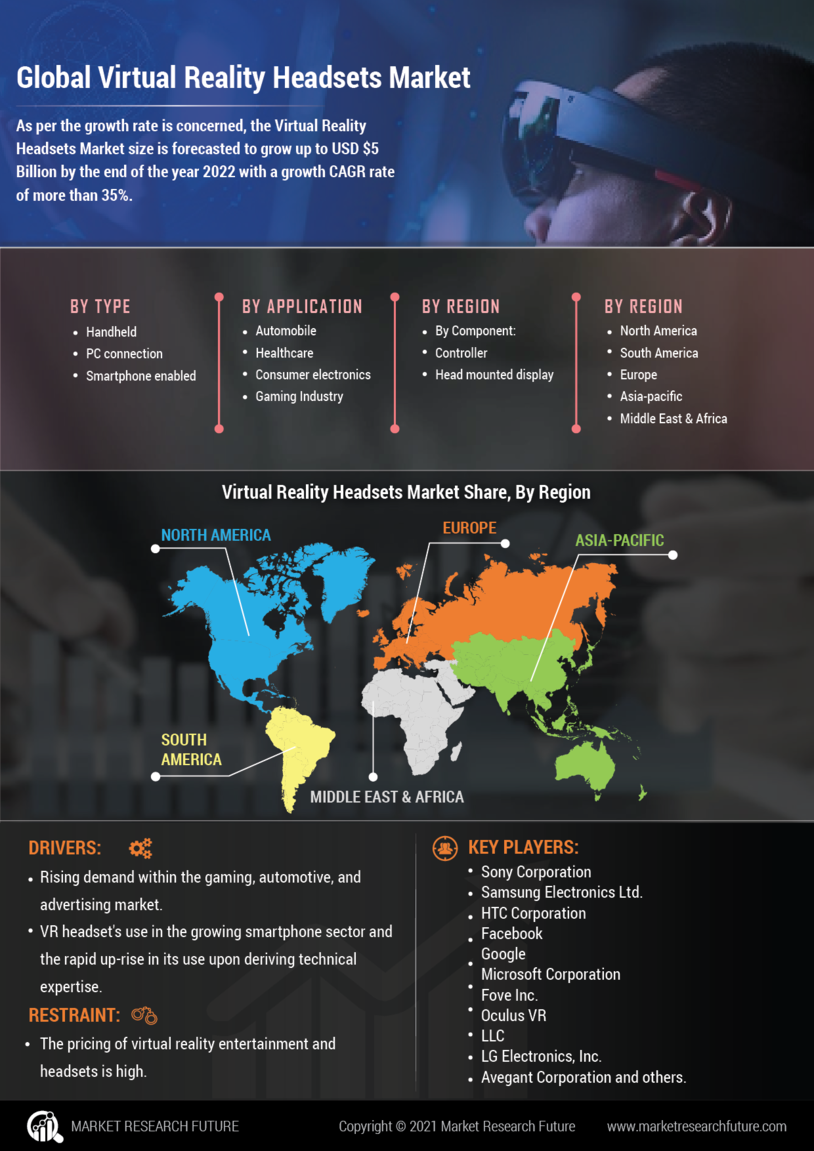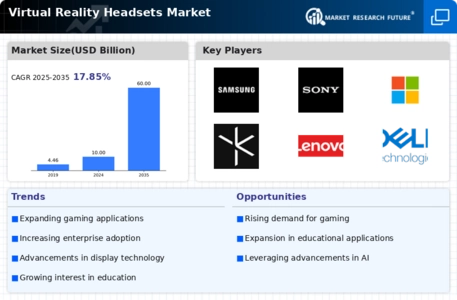Technological Advancements
The Global Virtual Reality Headsets Market Industry is experiencing rapid growth driven by continuous technological advancements. Innovations in display technology, such as higher resolution screens and improved refresh rates, enhance user experiences significantly. For instance, the introduction of OLED displays has improved color accuracy and response times, making virtual environments more immersive. Furthermore, advancements in motion tracking and haptic feedback systems contribute to a more realistic interaction within virtual spaces. These developments not only attract consumers but also encourage enterprises to adopt VR solutions for training and simulations, thereby expanding the market's reach.
Increased Adoption in Gaming
The gaming sector remains a pivotal driver for the Global Virtual Reality Headsets Market Industry. As gaming technology evolves, VR headsets have become increasingly popular among gamers seeking immersive experiences. In 2024, the market is projected to reach 10 USD Billion, largely fueled by the release of high-profile VR games and exclusive content. Major gaming companies are investing heavily in VR capabilities, which enhances the appeal of their platforms. This trend is expected to continue, with the gaming segment likely to dominate the market, as more gamers seek out VR experiences that offer unprecedented levels of engagement and interactivity.
Expansion of Content Ecosystem
The expansion of the content ecosystem is crucial for the Global Virtual Reality Headsets Market Industry. As more developers create VR content across various genres, including gaming, education, and virtual tourism, the appeal of VR headsets increases. Platforms that support user-generated content and facilitate easy access to diverse VR experiences are particularly influential. This proliferation of content not only attracts new users but also encourages existing users to invest in upgraded hardware. With projections indicating that the market could reach 60 USD Billion by 2035, the continuous growth of the content ecosystem is expected to play a vital role in sustaining this momentum.
Growth in Enterprise Applications
The Global Virtual Reality Headsets Market Industry is witnessing a surge in enterprise applications, particularly in training and development. Companies across various sectors, including healthcare, manufacturing, and education, are increasingly utilizing VR for simulations and training programs. This shift is driven by the need for cost-effective and efficient training solutions that can replicate real-world scenarios. For example, VR training modules in healthcare allow medical professionals to practice procedures in a risk-free environment. As organizations recognize the benefits of VR in enhancing employee skills and reducing training costs, the market is expected to expand significantly, contributing to a projected CAGR of 17.69% from 2025 to 2035.
Rising Demand for Immersive Experiences
Consumer demand for immersive experiences is a key factor propelling the Global Virtual Reality Headsets Market Industry. As individuals seek more engaging forms of entertainment and social interaction, VR technology offers unique opportunities for exploration and connection. This trend is evident in the rise of virtual events, social VR platforms, and immersive storytelling in media. The ability to transport users to different environments fosters a sense of presence that traditional media cannot replicate. Consequently, this growing appetite for immersive experiences is likely to drive sales of VR headsets, further solidifying the industry's position in the global market.























Leave a Comment